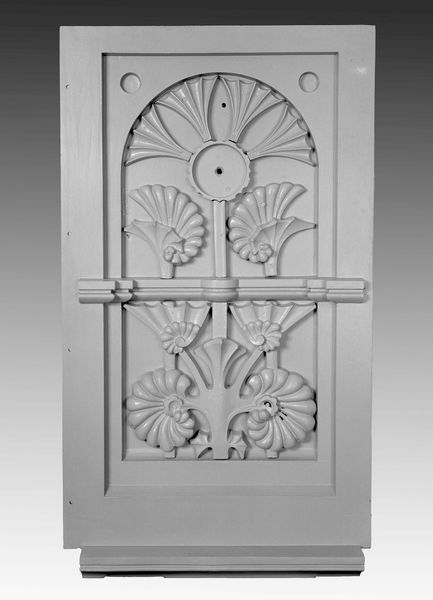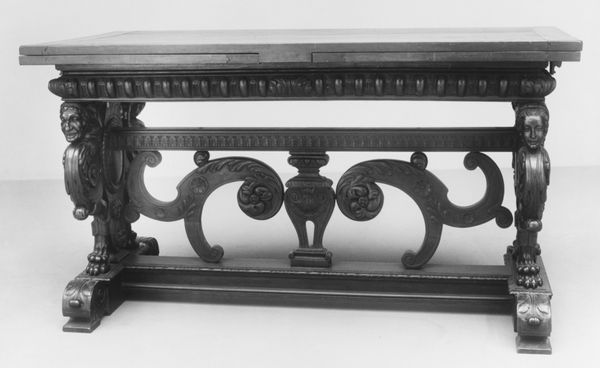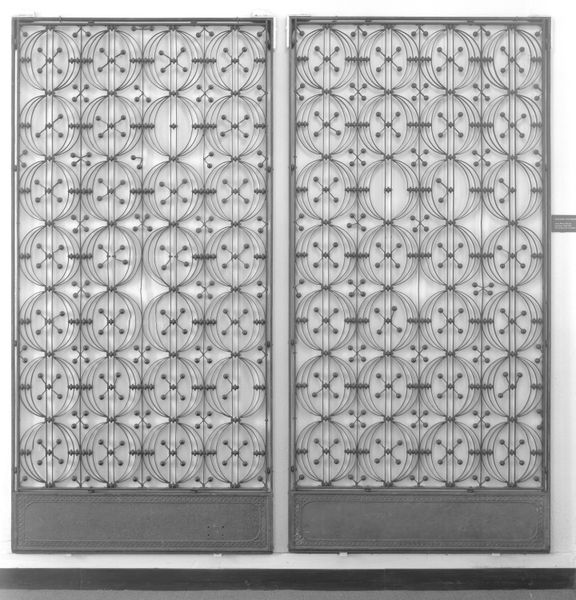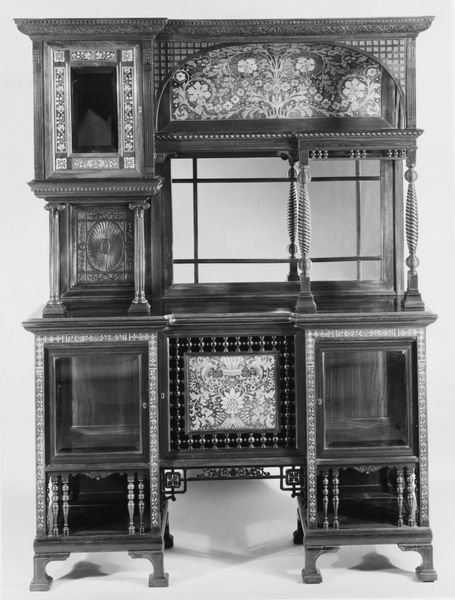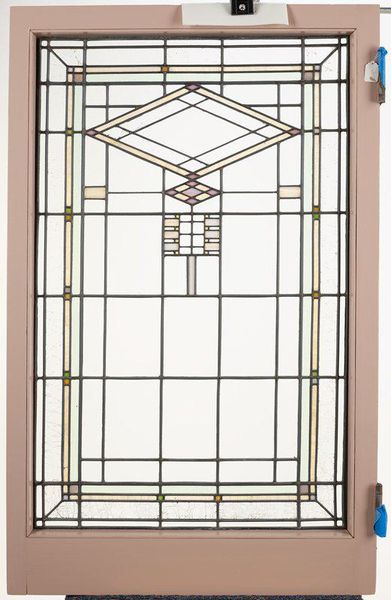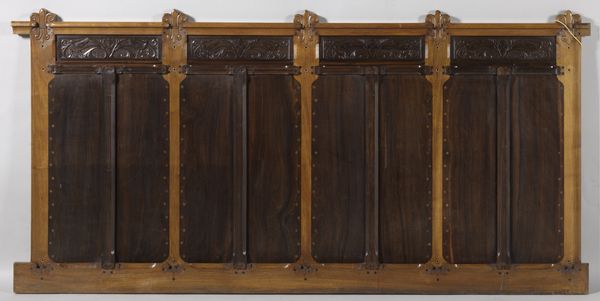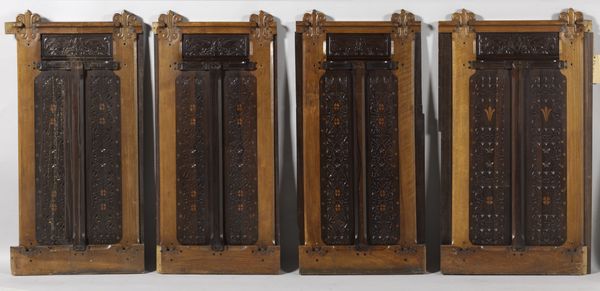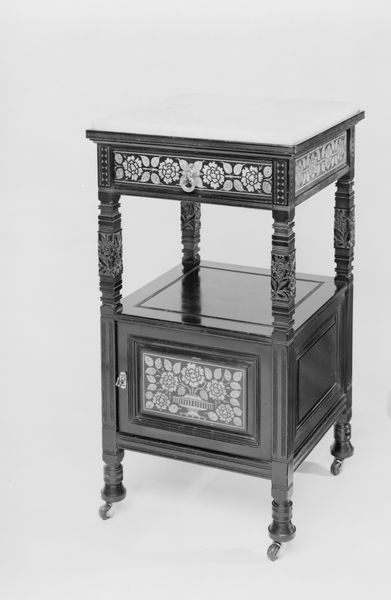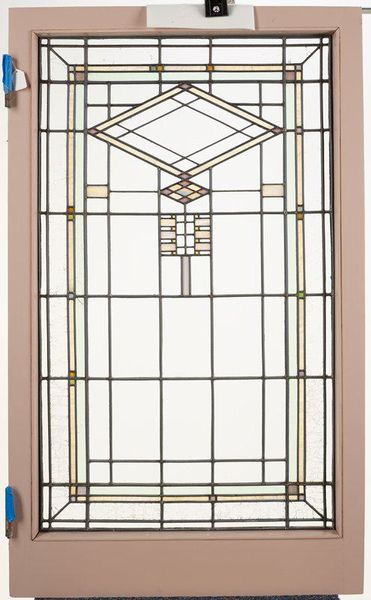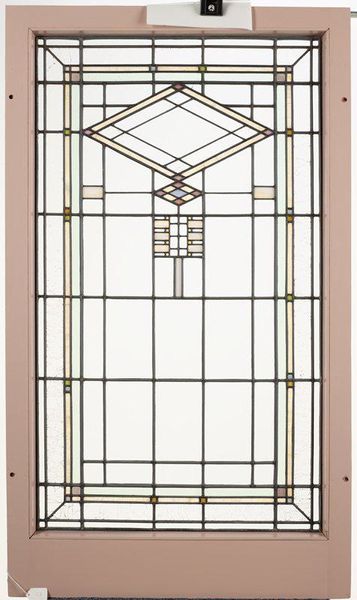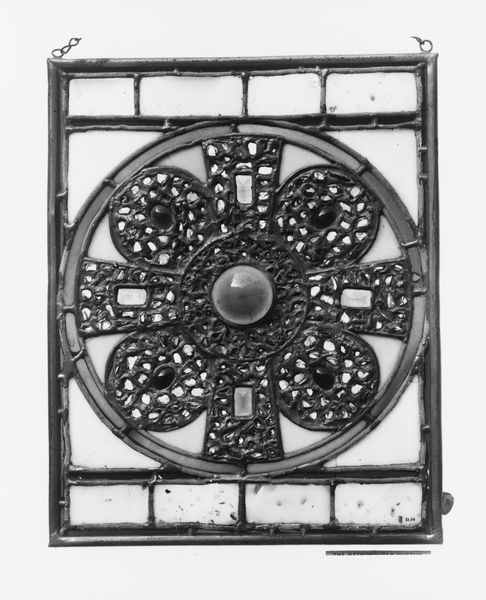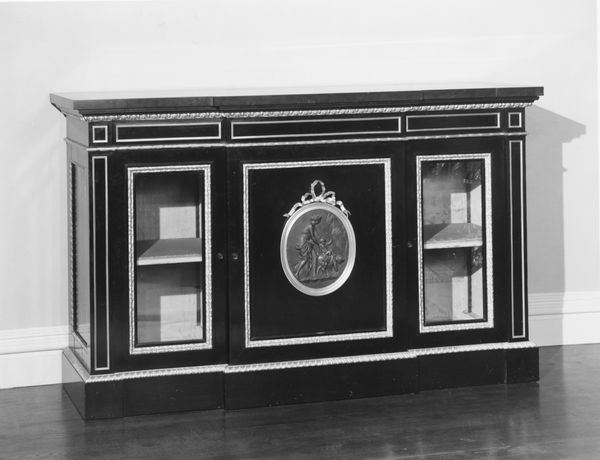
Dimensions: 38 x 45 1/8 in. (96.5 x 114.6 cm)
Copyright: Public Domain
Curator: I’m struck by the delicacy of this Firescreen, created by the Herter Brothers between 1877 and 1880. It combines glass, wood, and mixed media in a three-panel design. Editor: My immediate sense is one of geometric harmony, like a sophisticated puzzle rendered in muted tones. The patterns are simultaneously comforting and intellectually stimulating. Curator: Exactly! Firescreens like these weren’t mere decorations. The Herter Brothers catered to a very specific demographic, reflecting a social and economic stratification that needs critical examination. We're talking about a gilded age where opulence and privilege were deliberately displayed through items like this. It represents how the wealthy physically and metaphorically shielded themselves. Editor: And those shielding motives become all the more fascinating when viewed through a symbolic lens. The circular motifs remind me of protective mandalas, invoking an idea of inner and outer defense. And note the layering, the transparency. Curator: Tell me more... Editor: The combination of glass and openwork wood, creates a porous boundary—protection with visibility. It's not a solid wall, but a permeable barrier suggesting that engagement with the outside world, even when "protected," is nuanced. There's the undeniable art nouveau influence in those stylized, almost floral forms. How do we unpack that influence from a class perspective? Curator: Good point. We can investigate the relationship between Art Nouveau as an avant-garde movement and how its aesthetics were appropriated by the elite, effectively neutralizing any potential subversive edge it may have had. Consider how the very materials of the Firescreen – imported woods, precisely crafted glass – would have signified wealth. Who had access? Who didn't? The asymmetry is particularly curious within that decorative impulse. Editor: Absolutely. It pushes back against the perfect symmetry you see in earlier, say, neoclassical designs. And the central flower. How would you say that adds another symbolic layer, Curator? Curator: We have a symbol that ties nature with high status. Think about its visual connections to other imagery popular in the Gilded Age that elevated notions of an elite, idealized femininity as beautiful yet ultimately contained. Editor: I will certainly never look at a firescreen in the same way. Curator: Me neither! This exploration into its historical implications truly sheds new light on the firescreen as an artifact.
Comments
No comments
Be the first to comment and join the conversation on the ultimate creative platform.
